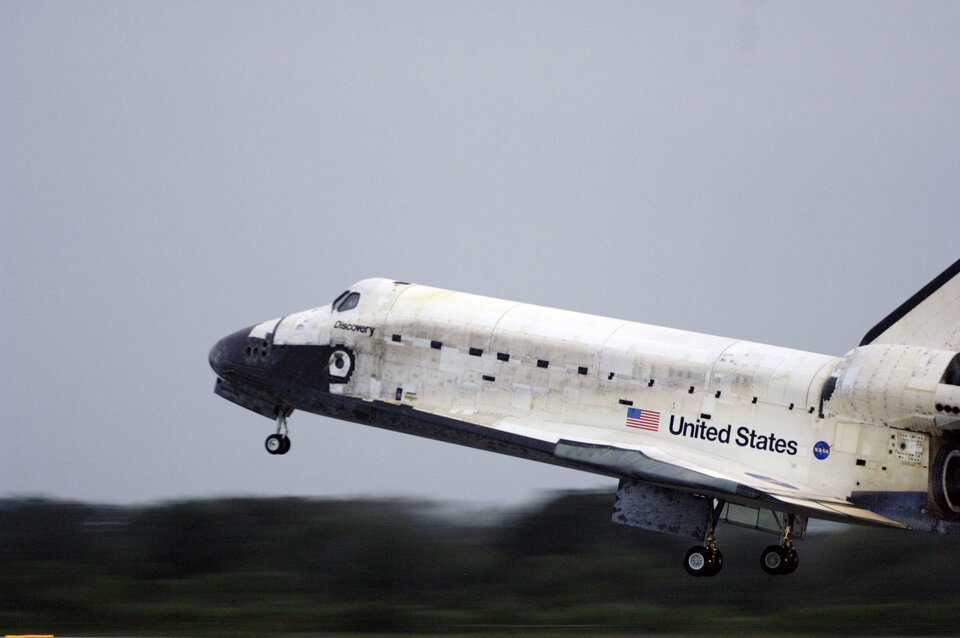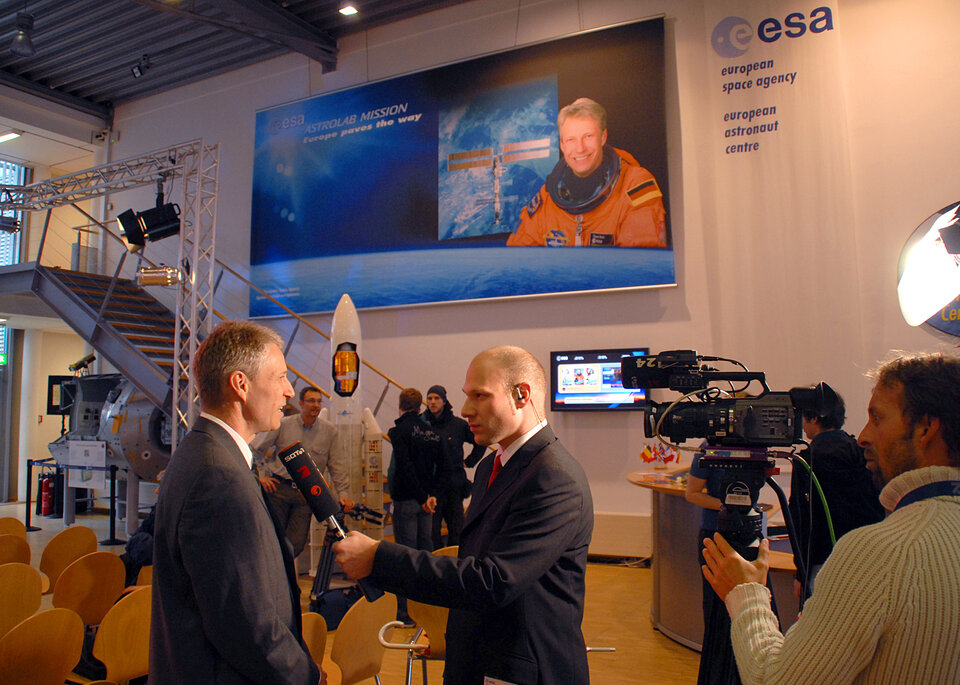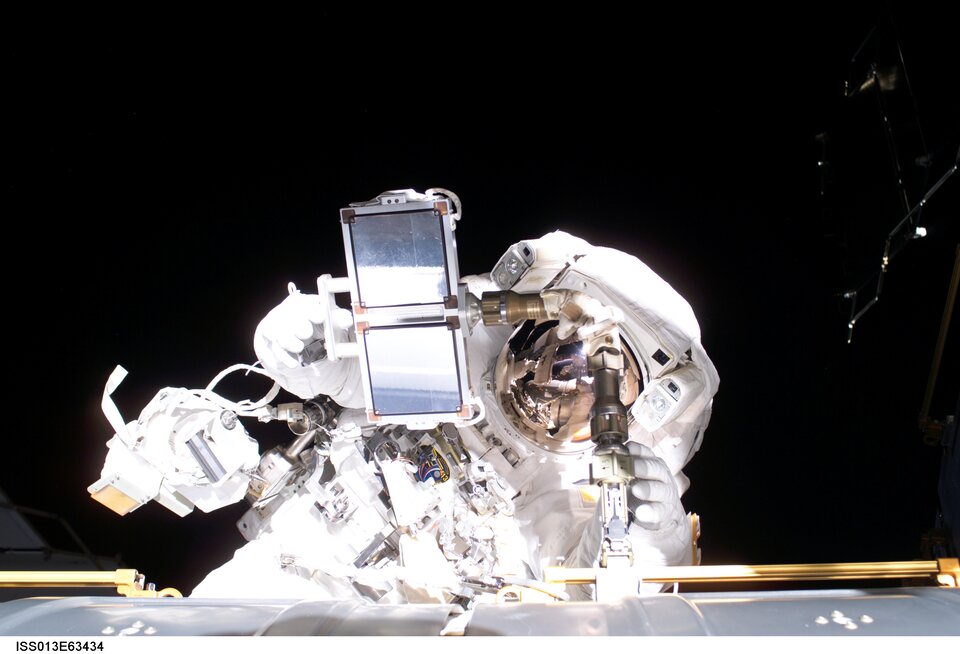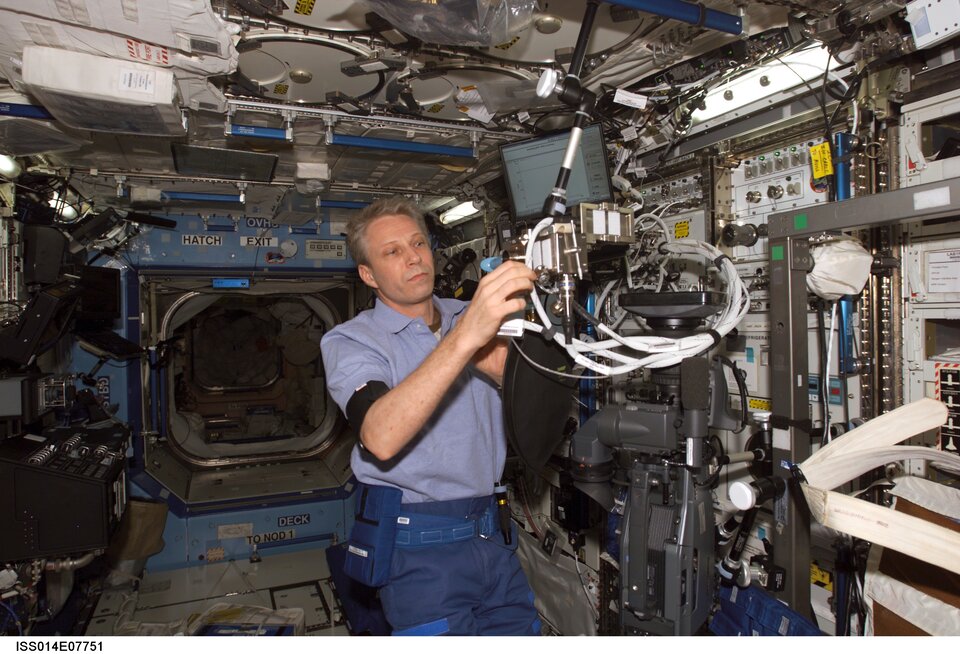"You see all of Europe in one glance" - Thomas Reiter reports on his ISS mission
The ISS, symbol of international cooperation, became a bit more international with ESA astronaut Thomas Reiter's long-duration mission. Today, Reiter met the press for the first time since returning from the International Space Station, at ESA's European Astronaut Centre (EAC), in Cologne, Germany.
In front of some 80 extremely attentive media members, Reiter presented a 45-minute report on the successful scientific results of his Astrolab Mission, as well as on his experiences of daily work and life on board the ISS. His mission ended on 22 December 2006.
The ESA astronaut began his journey on 4 July 2006 on board the US Space Shuttle Discovery. Two days later, he formally joined the Expedition 13 crew on the ISS as Flight Engineer. This marked the first time since the tragic February 2003 Columbia accident, and subsequent suspension of Shuttle flights, that a full, three-member crew was on board the ISS.
"It was an uplifting moment when the mission finally started. The launch, one of the high points after many months of preparation and training, marks a tremendous transition, since you reach orbit and start to experience weightlessness just nine minutes later," said Reiter.
Following the two-day journey to the ISS on board the crowded Shuttle, Reiter said the Space Station - with its 60-metre long axis - was "positively roomy."
Living and working on the ISS

Working in both the US and Russian sections of the Station, Reiter carried out a wide range of daily maintenance and operations tasks. He also managed a full slate of 19 experiments on behalf of a number of European institutions and research centres, focussing on areas such as human physiology and psychology, microbiology, plasma physics and radiation dosimetry as well as technology demonstrations.
In addition, the tightly organised science programme included experiments for industry and educational purposes, both for universities and primary and secondary schools.
Reiter was particularly pleased with the widespread enthusiasm shown by pupils who took part in actual experiments, as this is likely to help inspire their curiosity and inspire them towards future studies; he said human curiosity is one of the prime motivations for space exploration.
Apart from eating, sleeping and the intensive scientific programme, daily work life included physical exercise for two hours per day, plus regular, ongoing station maintenance.
ESA's ATV to supply Station starting in mid-2007

Furthermore, crew must unload and transfer supplies from the Russian Progress unmanned supply vehicles that arrive every three to four months.
With a two-tonne capacity, the Progress flights also deliver water, food, clothing, and technical and medical supplies, as well as letters and gifts from home. Beginning from mid-2007, ESA's new Automated Transfer Vehicle (ATV), the first of which is known as Jules Verne, will boost the resupply capacity to 7.5 tonnes.
As part of his mission, Reiter also helped deliver and install important ESA-developed equipment, including the MELFI (Minus 80C Laboratory Freezer for the ISS) experiment and the EMCS (European Modular Cultivation System).
A unique perspective
Despite having completed a previous long-duration mission, Euromir 95, Reiter - an experienced astronaut - reported being still enthralled by the view of the Earth from space, as well as seeing the sunrise and sunset multiple times per day. "We can see parts of continents and are amazed by the variety of colours and forms created by the combination of land, sea and clouds. It's something that leaves you breathless."
One of the high points of his almost six months in space was an EVA (extravehicular activity), carried out on 3 August 2006 together with US astronaut Jeffery Williams. The EVA lasted for 5 hours 54 minutes, and was completed ahead of schedule. The astronauts installed hardware on the ISS exterior to support future assembly work as well as a number of instruments and experiments that must be mounted externally.

"Working outside the Station means clambering around the exterior at an altitude of 400 kilometres and a speed of 27 000 kilometres per hour - this is an amazing and indescribable feeling," reports Reiter.
Even if the space suits are technically sophisticated, Reiter said that each movement was difficult in weightlessness, making space walking like playing sports. That Reiter and his colleague Williams could finish the EVA ahead of schedule and so complete several additional tasks speaks well of European astronauts' physical conditioning and preparation.
Further, on the morning of 4 August 2006, just over 30 days after arriving at the ISS, Reiter broke the previous European space duration record of 209 days, 12 hours, 25 minutes and 11 seconds in space, which was held by his ESA colleague Jean-Pierre Haigneré.
To the question: Can one really feel at home on board the ISS? Reiter said, "Yes, my parting from my two fellow crew colleagues was rather difficult, so we did in fact feel quite at home. There are good days and bad days, and we went through them together."
Back to Earth

On 22 December 2006, Reiter returned to Earth together with ESA astronaut Christer Fuglesang, from Sweden, who had travelled into orbit on 10 December on board the Shuttle Discovery to undertake the Celsius Mission, aimed at helping extend and enlarge the ISS. Overall, Reiter spent 171 days in space, a new European record.
After a three-day return trip, Reiter said that he felt "relatively good" upon landing at Cape Canaveral, Florida, adding that the Shuttle provided a much more comfortable landing than the Soyuz capsule did on his last return.
"I wouldn't say 'No' if asked to go again," said Reiter with a smile when asked if he would like to return to space.
Michel Tognini, Head of the European Astronaut Centre, and an astronaut himself, stated that Reiter is now the European astronaut with the most experience.
As Chairman of the ESA Council and CEO of the German Aerospace Center (DLR), Professor Dr Sigmar Wittig underlined the strong cooperation of all partners involved in Reiter's Astrolab Mission, which is enabling Europe to play a fundamental role in the completion and operation of the ISS. For Germany, one of the key contributions has been the establishment and operation of the Columbus Control Centre, located at DLR's Oberpfaffenhofen facility.
Europe on the ISS to stay

Astrolab and Celsius were the first in a series of ESA missions to the International Space Station, as Europe fulfils its duty as a fully-fledged ISS partner, contributing to maintenance and assembly tasks, with European modules set to be delivered.
In 2007, ESA plans to fly at least two more astronauts to the Station on assembly missions. It is also negotiating a flight opportunity for a third with a view to a second European astronaut being assigned a permanent crew member slot.
Already-approved contributions include the flights of Paolo Nespoli, of Italy, on the STS-120 mission to deliver the Node 2 module during the summer and Hans Schlegel, of Germany, on STS-122 to accompany ESA’s Columbus laboratory in the autumn. The long-duration flight of Leopold Eyharts, of France, is under discussion with NASA.






